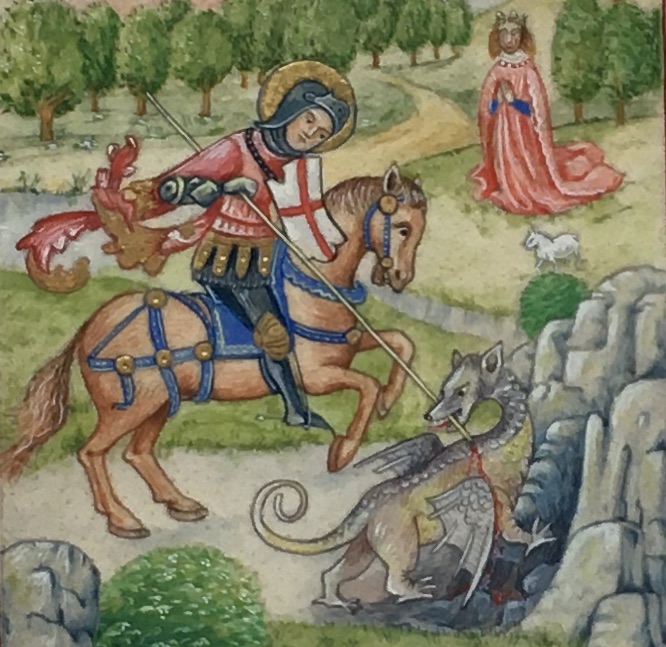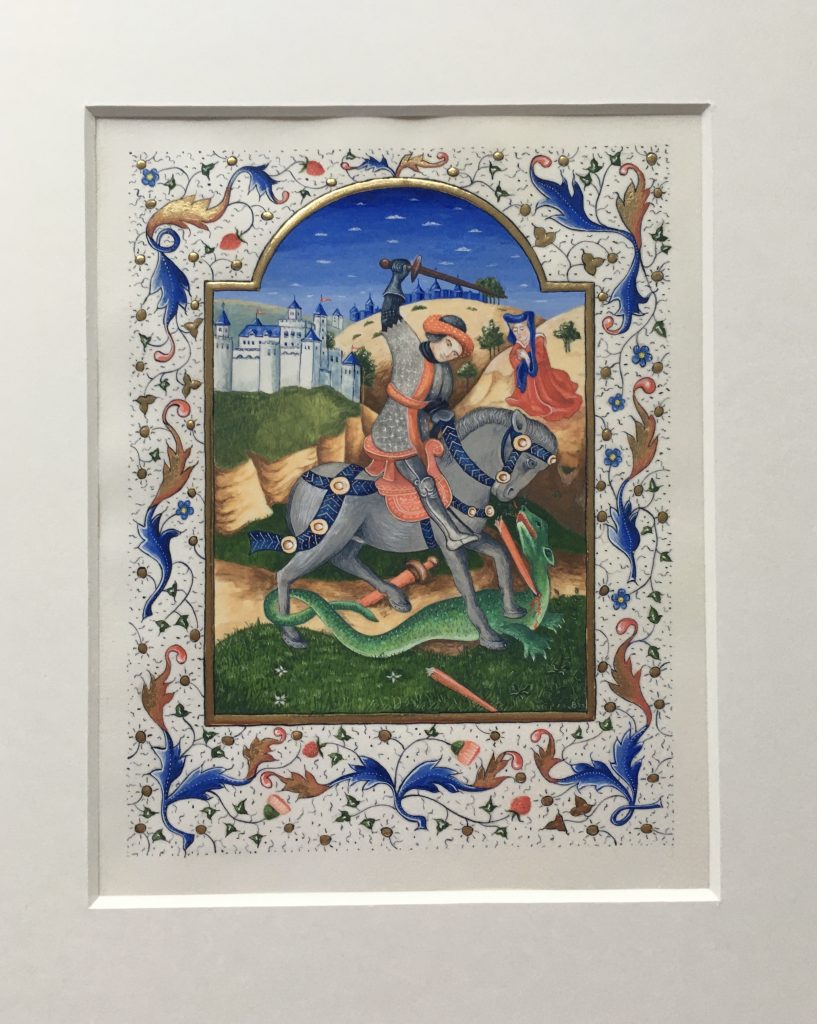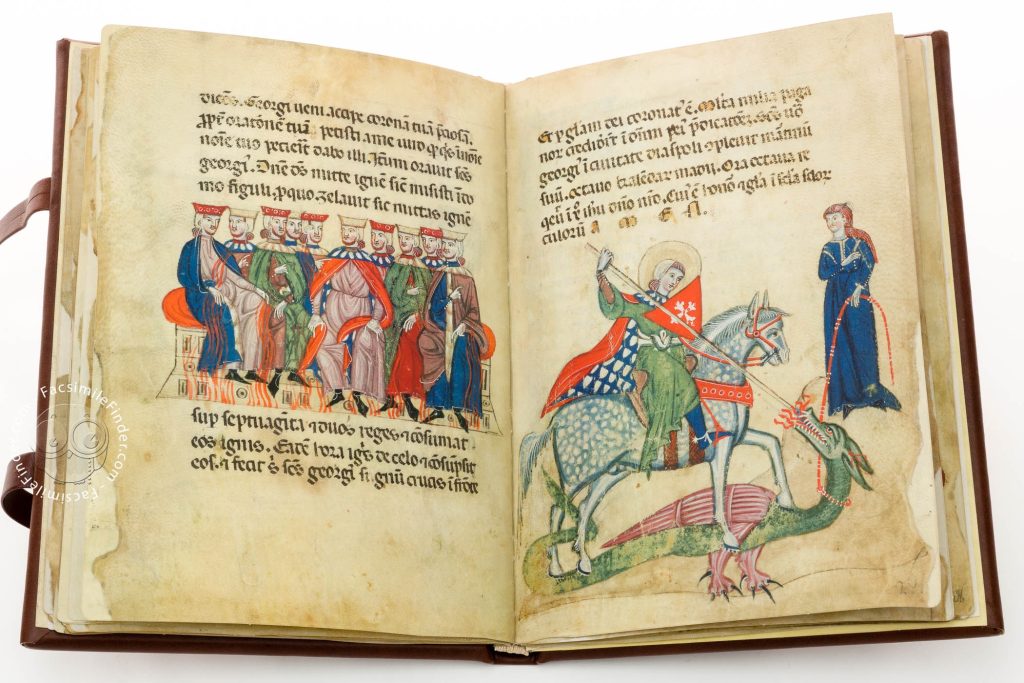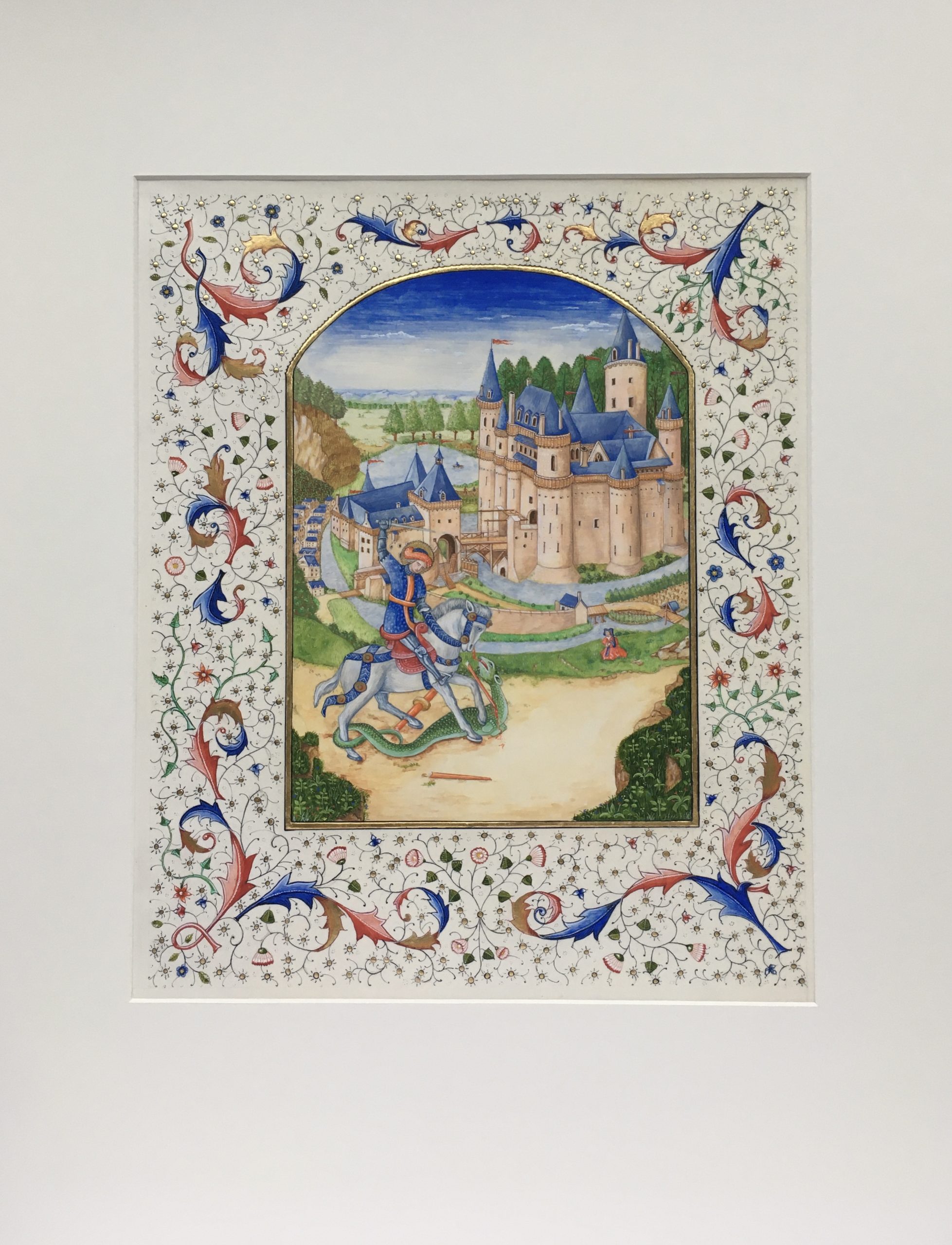Saint and hero in manuscripts
Saint George’s fight against the dragon is a subject that is often depicted in illuminations, especially from the 13th century onwards. It symbolises the victory of Faith over Evil. George holds a spear, rarely a sword, and strikes down the monster, while the princess prays in the background.
A cult was born around Saint George. The success of the cult of Saint George was considerable and his fame spread to all parts of the Christian world. He became the emblem of European countries and regions such as England (St. George), Portugal, Catalonia and Aragon (Sant Jordi).
I have started to do a number of illuminations on this theme which you can see here.
Gregory, with the Dutch name: Joris, was possibly a Roman army officer who died a martyr’s death during the persecution of Christians by the emperor Diocletian. He probably died around the year 303. His feast day is 23 April.
A well-known legend has been formed around his person which is included in the 13th century collection of legends ‘Legenda Aurea’. Incidentally, he was already worshipped as a saint in Palestine in the 4th century.
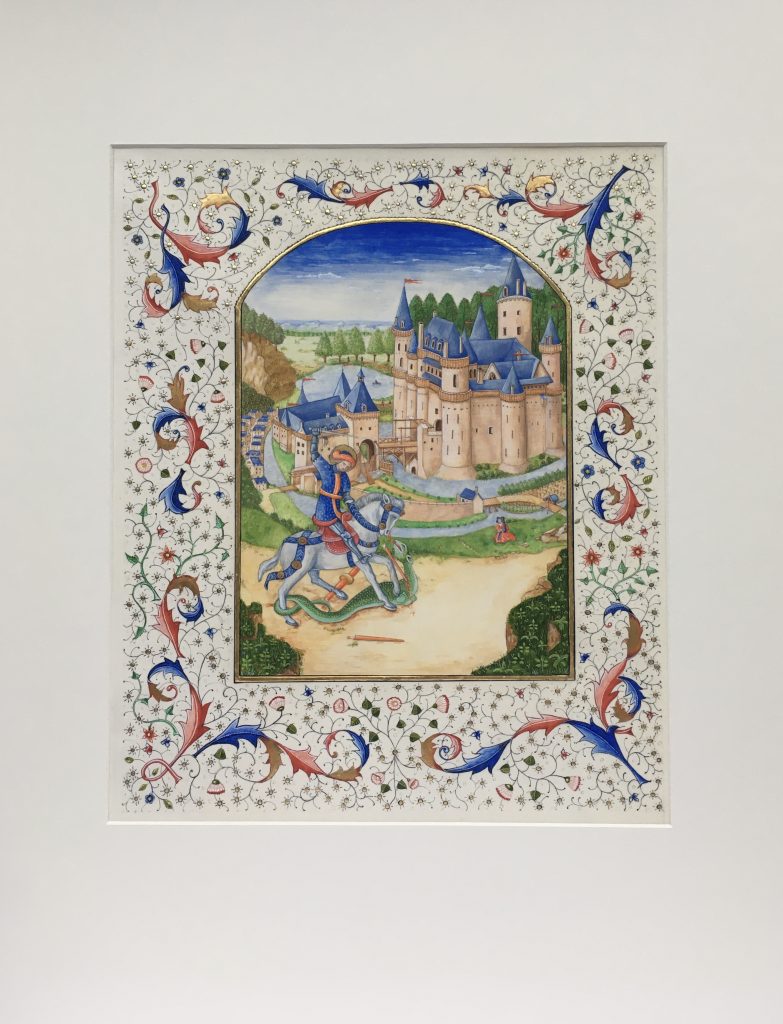

Sint George and the dragon, is a theme that you come across in a lot of manuscripts and I wanted tot connect with this tradition. First I have made my own composition and then a replica of an illumination, made by the famous illuminator: Willem Vrelant. Active as an illuminator between 1454-1481.
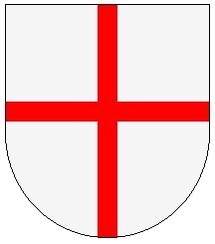
Dragons are near-ubiquitous in medieval manuscripts. We see them in: bestiaries, herbals, books of history and legend, and Apocalypse texts. They also serve as symbols, heraldic devices, and even as just decoration. They always shown as reptilian, winged, fire-breathing creatures.
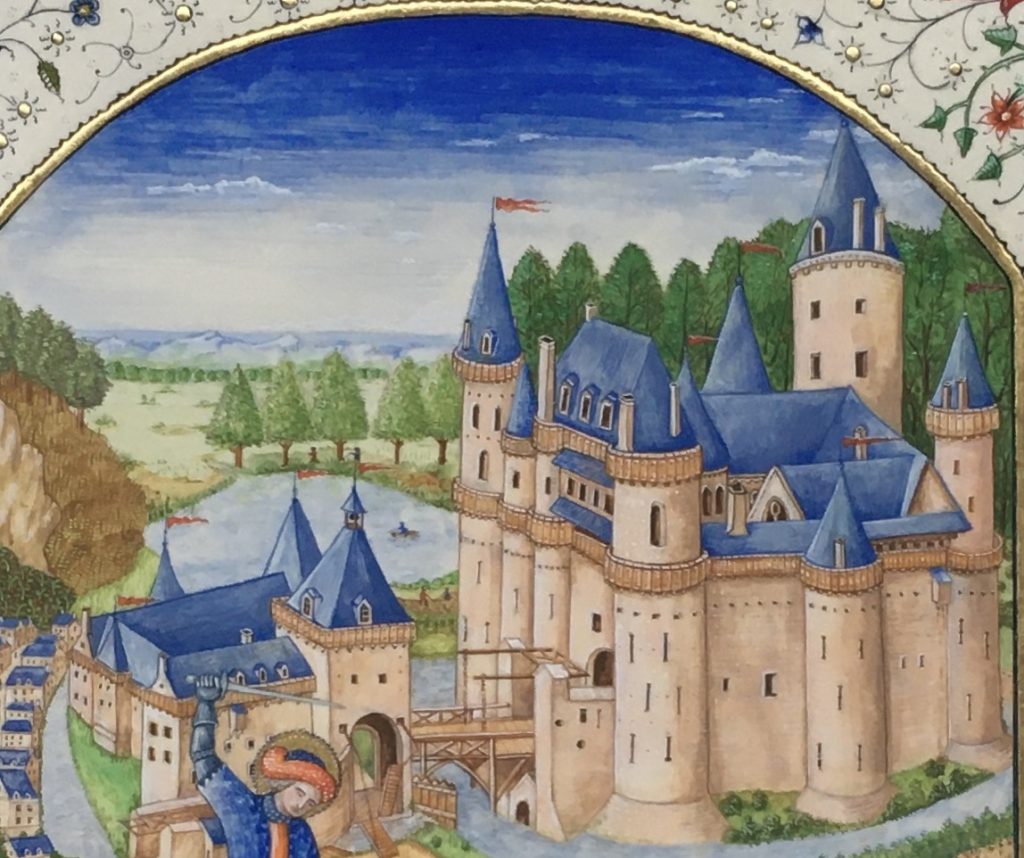
The Anatomy of a Dragon https://blogs.bl.uk/digitisedmanuscripts/2014/04/the-anatomy-of-a-dragon.html
Happy St. George’s Day https://britishlibrary.typepad.co.uk/digitisedmanuscripts/2013/04/happy-st-georges-day.html?_ga=2.228926810.774545704.1672684663-1987420935.1671569213
Two very interesting blogs about manuscripts and St. George from the British Library / British library.
The Legend
According to legend, a terrible dragon held sway over the region around the Libyan city of Selena and terrorised the people there. Hungry as he was, to satisfy that hunger he wanted two sheep a day from the inhabitants of the region. If that was not enough for the glutton then a human had to be sacrificed. The victims were assigned by lot. One evil day, lots were drawn and yes, the king’s daughter had to be sacrificed to the dragon. The king, shocked as he was, tried to find a replacement with all his possessions. But the people did not agree. Thus, the princess was taken to the swamp where the monster resided.
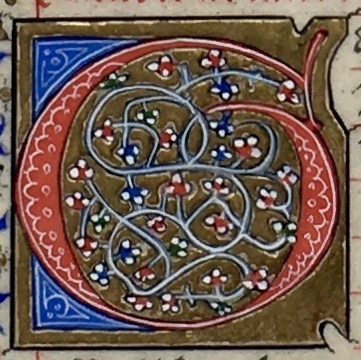
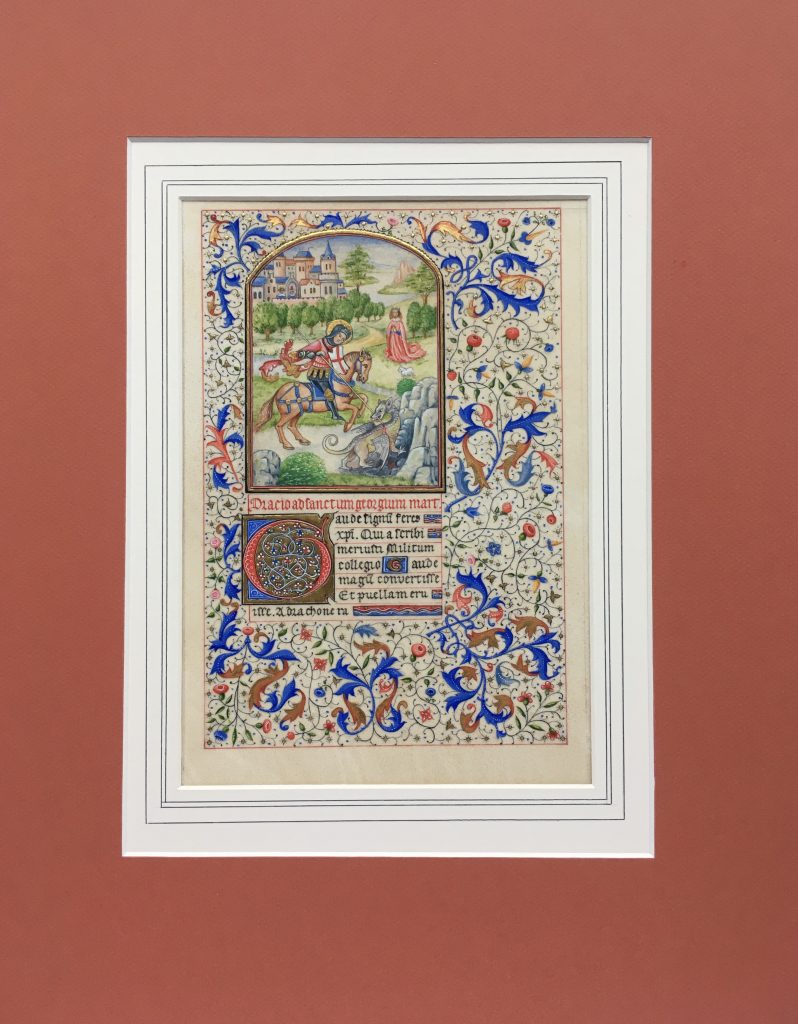
And then when the need was at its highest, Gregory, the knight came along. He saw the princess and asked where she was going. She warned the knight to get out of the way, or he too would perish. Then suddenly the dragon appeared. Gregory did not think twice, made a sign of the cross, brought his lance to bear and stabbed the monster. He then asked the princess for her belt and tied it around the dragon’s neck. Together they returned to the city where the people were still in great fear. From the king he could get great treasures but he refused. However, he did call on the king and the people to convert to Christ, maintain the churches and take good care of the poor.
